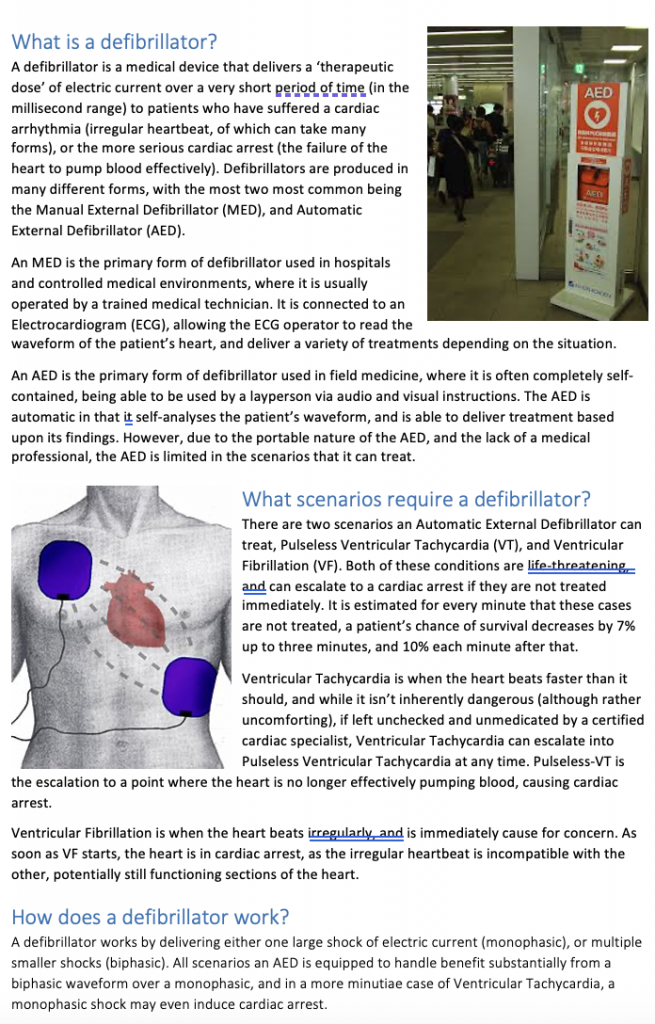Role of Defibrillators in Life-Saving Interventions
Summary:
This note focuses on defibrillators and provides information on various aspects related to their use. The note explains that a defibrillator is a medical device that delivers a therapeutic dose of electric current to patients experiencing cardiac arrhythmias or cardiac arrest. There are two main types of defibrillators: the Manual External Defibrillator (MED) used in hospitals and controlled medical environments, and the Automatic External Defibrillator (AED) used in field medicine.
The note then discusses the scenarios that require a defibrillator, specifically focusing on Pulseless Ventricular Tachycardia (VT) and Ventricular Fibrillation (VF), both of which are life-threatening. It highlights the importance of immediate treatment with a defibrillator, as the chances of survival decrease significantly with every minute of delay.
Next, the note explores how defibrillators work. It explains that defibrillators deliver electric shocks in either monophasic or biphasic waveform. The biphasic waveform is preferred as it is more effective in treating the conditions mentioned earlier. The note also addresses the power requirements of defibrillators and explains the use of capacitors to deliver the necessary electric current.
The side effects of defibrillation are then discussed, including the potential for severe burns on the skin surface and underlying tissue. However, the note emphasizes that these burns are relatively insignificant compared to the life-threatening nature of cardiac arrest.
Lastly, the note covers considerations to be taken when using a defibrillator. These include physical precautions to prevent the electric shock from travelling through conductive objects and medical considerations for pediatric use involving smaller pads. The safety of first responders during the shock is also highlighted, emphasizing the need for non-essential persons to move away from the area to prevent accidental injuries.
The note concludes with a bibliography listing various sources of information on defibrillators, their operation, and related topics.
Excerpt:
Role of Defibrillators in Life-Saving Interventions
Electricity in Medicine – the Defibrillator
Table of Contents
What scenarios require a defibrillator?. 2
How does a defibrillator work?. 2
What are the side effects of defibrillation? 3
What are some considerations required when using a defibrillator? 3


Reviews